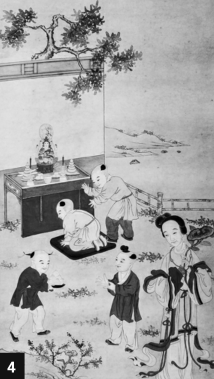 |
|
A Beijing folk painting in Qing Dynasty on moon-admiring ceremony of Mid-Autumn Festival.[Photo provided to China Daily] |
"And you can also see images of Zhinu (the Weaver Girl) in Chinese mythology on many Japanese exhibits," Zhang adds. "But they have been adapted into the Japanese style."
In Chinese culture, Zhinu and her husband Niulang (the Cowherd) are symbols of undying love.
For the third section on fine art, the exhibits show the state-of-the-art techniques used in Japanese lacquer ware made by master artisans, such as a folding screen (byobu) of a landscape of the Sumida River in Edo.
According to Zhang, it took five years to prepare for the exhibition, which is the result of a recent cross-border joint framework.
In 2002, the Capital Museum, Edo-Tokyo Museum, and Seoul Museum of History in South Korea, launched a cooperation to rotate holding academic symposiums. In 2007, the Shenyang Imperial Palace Museum in Liaoning province also joined the framework.
The opening of The Metropolises and the Prosperities within Edo and Beijing in the 18th Century on Aug 14 marks this year's symposium in Beijing, where the various museum share their experiences of operating museums and discuss new approaches.
And holding exchange exhibitions has been added to the framework in recent years.